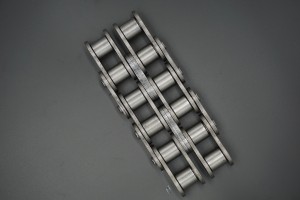In-depth analysis of roller chain post-heat treatment time
Introduction
In the production process of roller chains, post-heat treatment is a crucial link. It directly affects the performance, life and reliability of roller chains. For international wholesale buyers, understanding the time and related process parameters of roller chain post-heat treatment will help them better evaluate product quality and choose suitable suppliers. This article will explore the various links and time required for roller chain post-heat treatment in depth, and analyze them in combination with actual cases.
Overview of roller chain post-heat treatment
The roller chain post-heat treatment mainly includes two main steps: quenching and tempering. Its purpose is to improve the mechanical properties of the roller chain, such as hardness, toughness and wear resistance, through high-temperature heating and rapid cooling (quenching) and subsequent low-temperature heating (tempering). The time and temperature parameters of heat treatment will vary depending on the material, size and end-use requirements of the roller chain.
Main steps and time of roller chain post-heat treatment
1. Quenching
Quenching is the first step of roller chain post-heat treatment. Its purpose is to change the internal structure of the roller chain through rapid cooling, thereby improving hardness and strength. The quenching time is usually short, but the temperature and cooling rate need to be precisely controlled.
Heating time: Depending on different materials and process requirements, the heating time is usually between 2 and 3 minutes. For example, when using low-carbon low-alloy steel to produce roller chains, the heating temperature is 870-890℃ and the heating time is 2-3 minutes.
Cooling time: The cooling time of quenching is relatively short and is usually completed within a few minutes. The control of cooling rate is crucial because it directly affects the hardness and internal stress of the roller chain.
2. Tempering
Tempering is the second step of post-heat treatment of roller chains. Its purpose is to reduce the internal stress after quenching by low-temperature heating while maintaining a certain hardness and toughness. The tempering time is usually longer than the quenching time.
Pre-tempering: The temperature of pre-tempering is usually around 130℃, and the holding time is about 2.5 to 3.5 hours. This step helps to initially stabilize the internal structure of the roller chain.
Secondary tempering: The temperature of secondary tempering is usually around 250℃, and the holding time is 4 to 5 hours. Secondary tempering can further optimize the mechanical properties of the roller chain and keep it stable in long-term use.
Factors affecting the post-heat treatment time of roller chains
1. Material composition
The material composition of the roller chain has a significant impact on its post-heat treatment time and process parameters. For example, the quenching temperature and time of low-carbon low-alloy steel are different from those of ordinary carbon steel. Different material compositions require adjustment of heating temperature, holding time and cooling rate to ensure optimal mechanical properties.
2. Roller chain size
The size of the roller chain also affects the time of post-heat treatment. Larger roller chains require longer heating and cooling times to ensure uniform heat distribution and uniform changes in internal structure.
3. Process accuracy requirements
Different applications have different requirements for the accuracy and performance of roller chains. For example, high-precision and long-life roller chains require more stringent heat treatment processes and longer processing times. The heat treatment process of this roller chain includes multiple steps such as preheating, carburizing and quenching, cooling, cleaning, pre-tempering and secondary tempering, and the time and parameters of each step need to be precisely controlled.
Actual case analysis of roller chain post-heat treatment
Case 1: Low-carbon low-alloy steel roller chain
According to the patent, when using low-carbon low-alloy steel to produce roller chains, the post-heat treatment process is as follows:
Quenching: heating temperature 870-890℃, heating time 2-3 minutes, followed by press oil spray quenching.
Tempering: tempering temperature 200-350℃, holding time adjusted according to specific requirements.
This process can significantly improve the strength and wear resistance of the roller chain, while reducing the weight of the chain.
Case 2: High-precision long-life roller chain
According to the patent, the post-heat treatment process of high-precision long-life roller chain includes the following steps:
Preheating: heat the roller to 450-500℃, keep warm for 1.5-2.5 hours.
Carburizing quenching: heat to 900-1000℃, pass acetone and methanol, control the carbon potential at 1.10±0.05%, keep warm for 3-4 hours before quenching.
Cooling: Cooling temperature is controlled at -10℃ to -15℃, time is 10-20 minutes.
Pre-tempering: temperature 130±5℃, time 2.5-3.5 hours.
Secondary tempering: temperature 250±5℃, time 4-5 hours.
This process can significantly improve the wear resistance, corrosion resistance and impact toughness of roller chains.
Conclusion
The time and process parameters of roller chain post-heat treatment are key factors to ensure product quality. By precisely controlling the heating time, temperature and cooling rate, the mechanical properties and service life of the roller chain can be significantly improved. For international wholesale buyers, understanding these process parameters will help them better evaluate the supplier’s technical level and product quality. In the future, with the continuous development of materials science and heat treatment technology, the post-heat treatment process of roller chains will be further optimized to meet higher performance requirements.
Post time: Jul-11-2025

